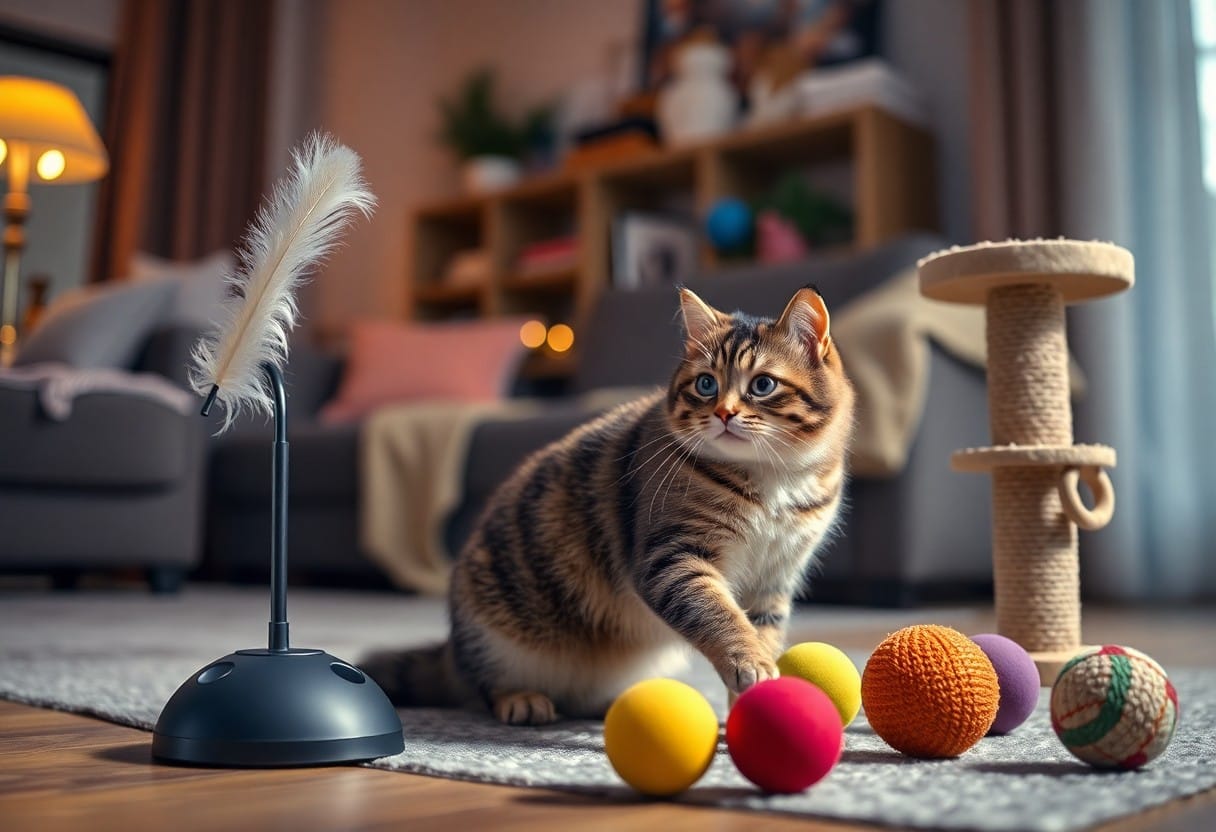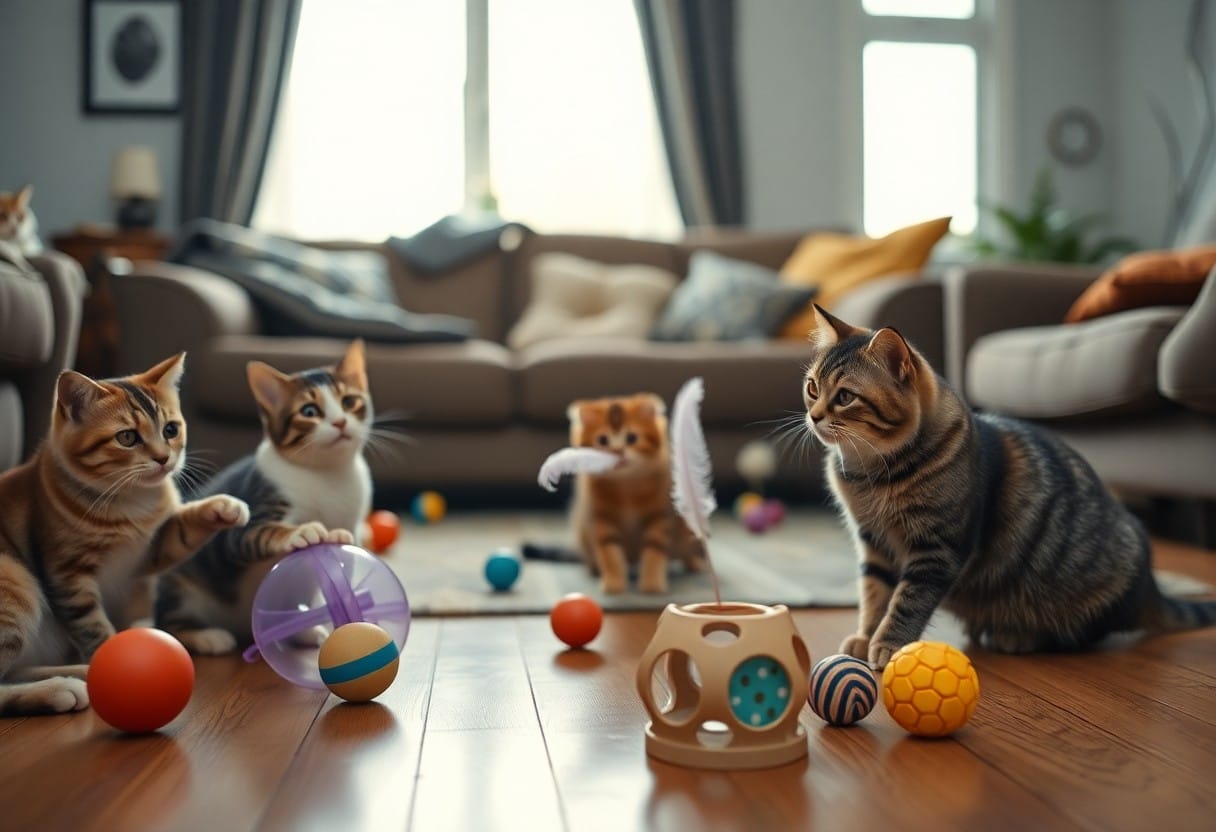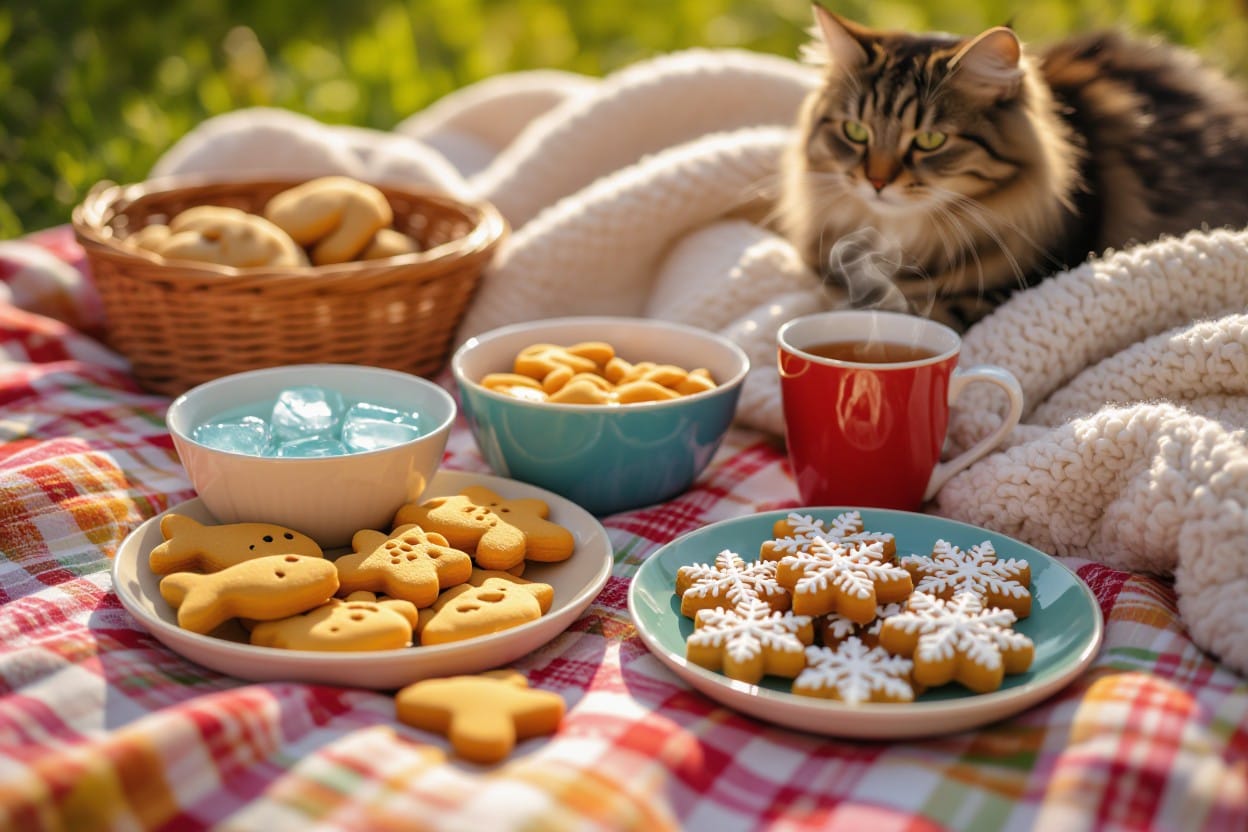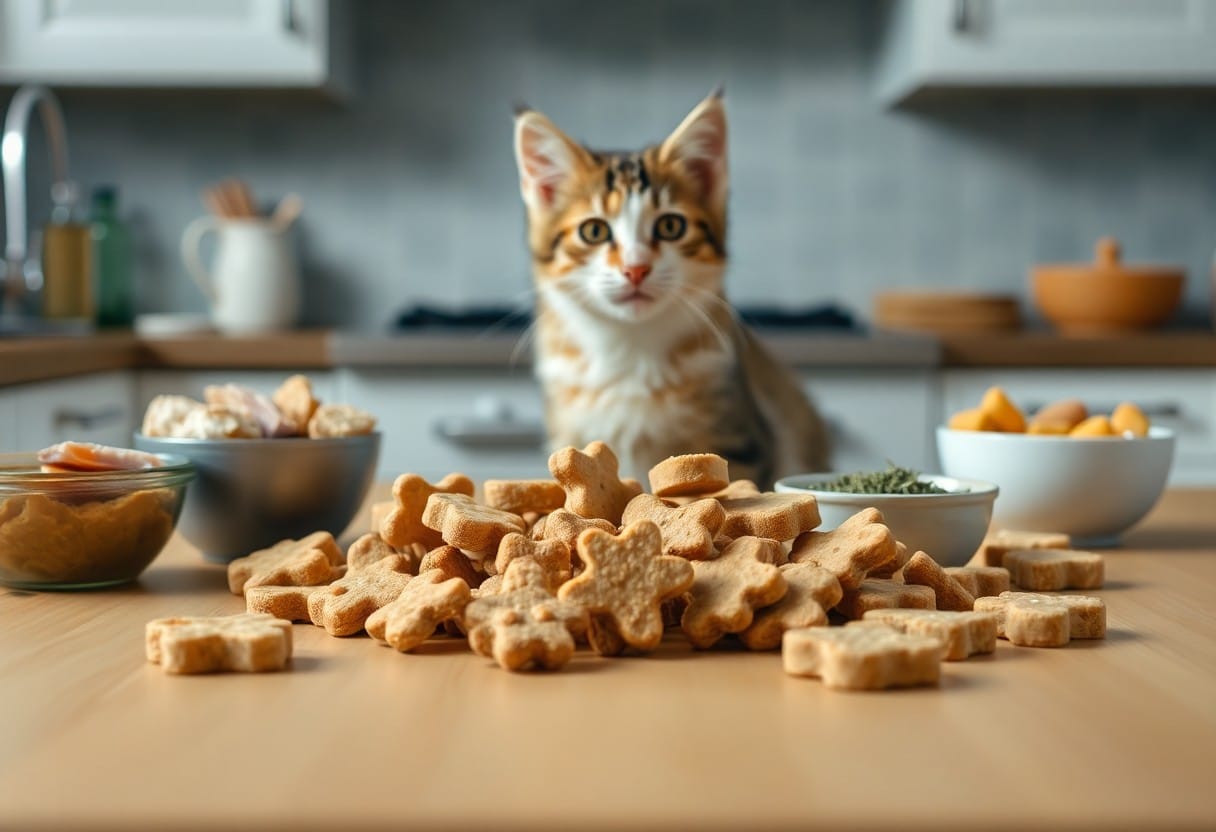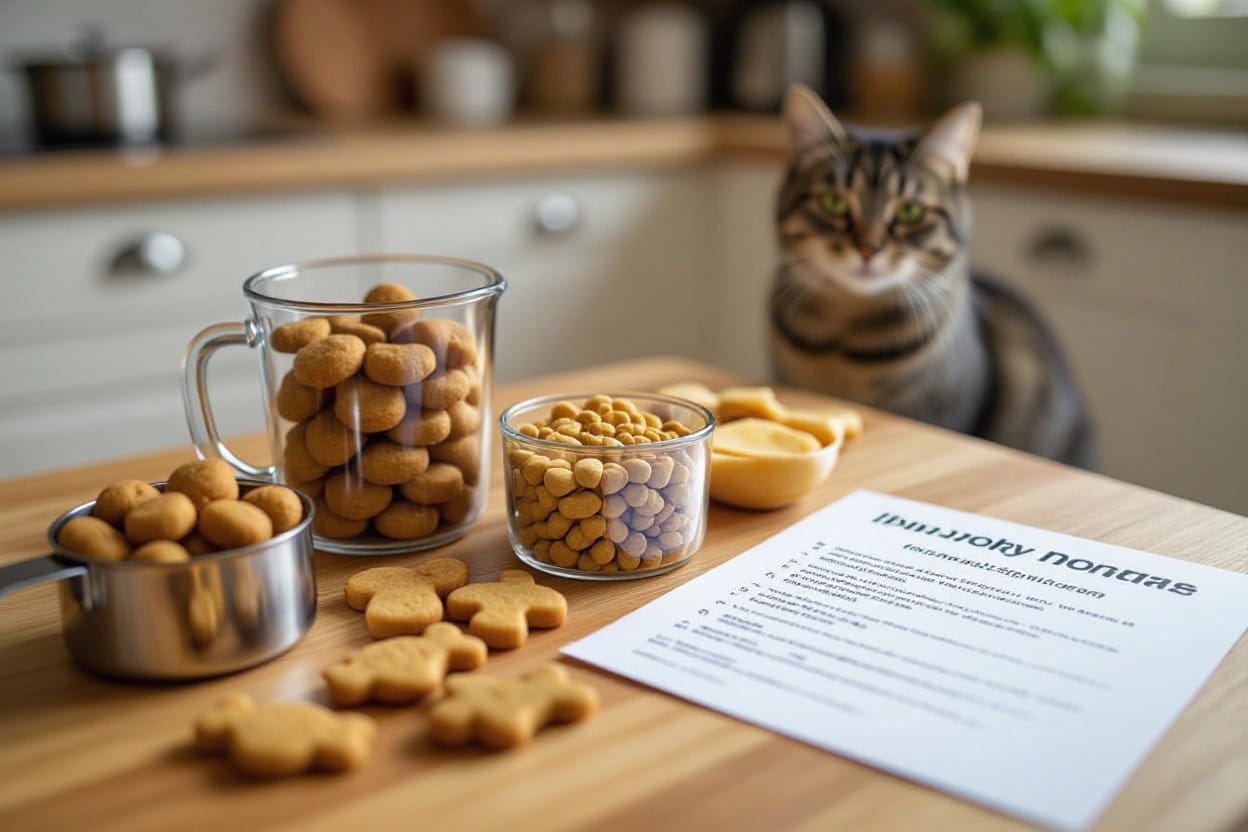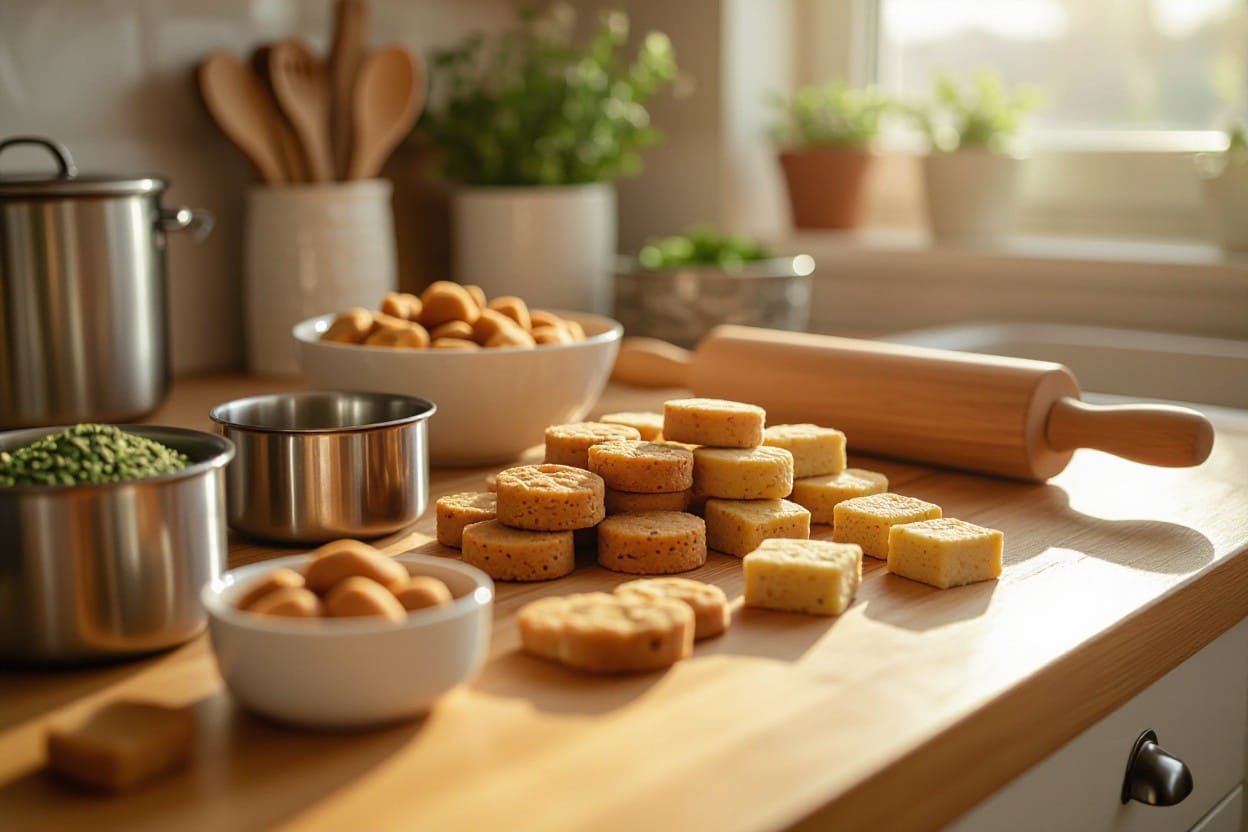You can treat your furry companion to flavorful, nutritionally balanced goodies right from your kitchen! Making homemade cat treats not only saves you money but also allows you to control the ingredients, ensuring your cat enjoys safe and healthy morsels. With simple recipes and a few key ingredients, you can create a variety of delectable snacks tailored to your feline’s preferences. Join us as we explore exciting ways to whip up tasty and wholesome treats that your kitty will love!
Key Takeaways:
- Homemade cat treats can be made using natural ingredients, ensuring your cat enjoys tasty snacks without artificial additives.
- Experimenting with different flavors and textures can help cater to your cat’s unique preferences, making treat time more enjoyable.
- Making your own cat treats provides a fun and rewarding way to bond with your feline friend while also keeping them healthy and happy.
The Nutritional Needs of Cats: Crafting Treats with Purpose
Creating homemade cat treats offers a unique opportunity to cater specifically to your feline friend’s nutritional needs. Understanding what your cat requires for optimal health can guide your ingredient choices, ensuring the snacks you whip up are both delicious and beneficial. By focusing on high-quality ingredients and important nutrients, you can craft delights that will keep your kitty purring while supporting their overall well-being.
Key Nutrients Essential for Feline Health
Cats thrive on a diet that includes high protein, healthy fats, and select vitamins and minerals. Protein sources such as chicken, fish, and turkey provide the amino acids necessary for muscle maintenance and energy. Healthy fats, including omega-3 and omega-6 fatty acids, contribute to a shiny coat and healthy skin. Essential vitamins like A, B vitamins, and minerals, particularly calcium and phosphorus, are vital for bodily functions, including vision, metabolism, and bone health.
Tailoring Treats to Your Cat’s Unique Dietary Requirements
Each cat is unique, and their dietary requirements may differ based on factors such as age, activity level, and health conditions. To ensure your treats complement their diet, take the time to understand their specific needs. For instance, senior cats may benefit from treats fortified with joint-supporting ingredients like glucosamine, while overweight cats might need lower-calorie options that use fiber-rich ingredients to help them feel fuller. Always consider allergies or sensitivities, as ingredients like wheat or dairy could pose problems for some cats. A chat with your veterinarian can provide tailored advice to help you create treats that enhance your cat’s diet and satisfy their taste buds.
Ingredient 101: Choosing Safe and Wholesome Components
Opting for safe and wholesome ingredients is your first step in creating irresistible cat treats that keep your feline healthy and happy. High-quality proteins, such as chicken, turkey, and salmon, are ideal choices packed with crucial amino acids. Incorporating small amounts of vegetables, like pureed pumpkin or peas, adds fiber and nutrients to the mix. Aim for organic and free from artificial additives, ensuring that every treat you craft nourishes your pet rather than detracts from their well-being.
Desirable Ingredients for Homemade Cat Treats
When considering ingredients for homemade cat treats, lean meats such as chicken or fish should take center stage due to their high protein content. Additionally, incorporating eggs provides a great source of protein and healthy fats. If your cat enjoys a little diversity, consider adding small amounts of cat-safe veggies like carrots or spinach for extra nutrients. Always look for natural, human-grade ingredients that exclude preservatives and fillers to maximize health benefits.
Common Foods to Avoid for Your Cat’s Safety
Steering clear of harmful foods is paramount for your cat’s well-being. Popular culprits include chocolate, onions, garlic, and grapes, all of which can lead to serious health issues. Additionally, avoid caffeine and alcohol, both toxic to cats. Certain artificial sweeteners, like xylitol, can cause dangerous drops in blood sugar. Being vigilant about ingredient choices will protect your feline friend from potential harm.
For instance, chocolate is not just a sweet treat for humans; it contains theobromine, which is toxic to cats and can lead to severe health complications or even death. Onions and garlic, while common in human diets, can damage your cat’s red blood cells and lead to anemia. In some cases, a tiny amount can suffice to harm, as these ingredients are not safe in any quantity. Always double-check the components in your recipes, and don’t hesitate to consult your vet if unsure about specific ingredients.
Step-by-Step Guide: Simple Recipes to Delight Your Cat
| Recipe | Description |
| Quick and Easy Fish-Based Treats | These delights can be whipped up using just a few simple ingredients that cats adore. |
| Nutritious Chicken Treats for Picky Eaters | Craft scrumptious chicken bites that even the fussiest eaters won’t resist. |
| Creative Treats Incorporating Superfoods | Boost your cat’s nutritional intake with these unique, health-packed snacks. |
Quick and Easy Fish-Based Treats
Fish-based treats are an instant winner in your feline’s book. Mix canned tuna in water with a bit of whole wheat flour and an egg, then shape and bake at 350°F for around 10-12 minutes. These tasty morsels are not only flavorful but packed with protein to keep your cat healthy and happy.
Nutritious Chicken Treats for Picky Eaters
Chicken treats can turn even the pickiest cats into enthusiastic snackers. Simply blend cooked chicken with oats and a splash of chicken broth, then shape them into small bites. Bake until golden for a crunchy treat that satisfies their cravings, whilst delivering imperative nutrients.
Using lean, cooked chicken ensures your treats are healthy and flavorful. The oats contribute fiber, making these snacks not only tasty but also beneficial for digestion. Plus, incorporating a bit of broth adds moisture and flavor, which cats crave. Offering these homemade chicken treats as a reward can enhance the bonding experience with your pet, as they’ll eagerly await them during your bonding sessions.
Creative Treats Incorporating Superfoods
Incorporating superfoods into cat treats elevates their nutritional value. Consider using ingredients like pumpkin or blueberries, which are full of vitamins and antioxidants. A simple recipe could involve blending pumpkin puree with quinoa flour and eggs, shaping into small bites, and baking until firm. Your cat will love the new flavors while benefiting from the health aspects.
Using superfoods like pumpkin can aid digestion and boost your cat’s immune system, while blueberries offer a rich array of antioxidants. Not only do these treats keep your cat healthy, but they also provide diverse flavors, preventing boredom in their diet. The blend of health and taste in these imaginative treats also reflects your commitment to your furry friend’s well-being.

Baking with Love: Tips for Making Treats a Culinary Success
Creating the ideal cat treat requires not only quality ingredients but also a dash of enthusiasm. Start with fresh ingredients that are specifically chosen for your feline friend’s dietary needs. Use precise measurements to ensure consistency in texture and flavor. Don’t hesitate to experiment with different flavors and textures; cats are often drawn to crunchy, meaty, or fishy treats. Additionally, keep portions small to avoid overwhelming your pet. After you’ve mastered a recipe, your cat will eagerly await their delicious homemade snacks!
Techniques for Perfect Texture and Flavor
Achieving the perfect texture and flavor in homemade cat treats comes down to the right mixing and baking techniques. Blending wet and dry ingredients thoroughly leads to an even consistency, necessary for uniform baking. Adjusting cooking time to achieve the desired crunchiness or softness can significantly enhance your treats. Cats often favor a subtle balance of flavors—adding a pinch of catnip or a hint of chicken broth can elevate any recipe to a new level of deliciousness.
Storing and Preserving Homemade Cat Treats
Proper storage of your homemade treats ensures they stay fresh and appealing to your pet. Store treats in an airtight container in a cool, dry area for optimal preservation. Most homemade cat treats can last up to one week at room temperature; if you want to extend their shelf life, consider keeping them in the refrigerator or even freezing them for long-term storage. Dedicating a specific container for your feline treats helps you maintain organization and freshness.
To maximize the shelf life of your homemade cat treats, opt for silicone, glass, or BPA-free plastic containers. Always label your containers with the date they were made, as a simple organizational tool can save you from serving expired treats. For those opting for freezing, ensure the treats are in a single layer until solid, then move them to a freezer-safe bag. This practice helps avoid freezer burn and ensures your cat enjoys the same delightful taste each time you bring out a treat.
The Bonding Experience: Making Treat-Making a Fun Activity
Creating homemade cat treats isn’t just about satisfying your feline’s palate; it’s also an opportunity for meaningful bonding time. Engaging in this culinary adventure allows you to share quality moments with your cat, enriching your relationship while also ensuring that their dietary needs are met. Incorporating your beloved pet in the treat-making process can elevate the entire experience, turning a simple task into a fun, interactive session. Plus, the joy of sharing something special with your furry friend can strengthen your bond significantly.
Involving Your Feline in the Process
Invite your curious cat to be part of the action by letting them observe the cooking process. While they may not wield measuring spoons, their excitement can be fueled by allowing them to sniff the ingredients or stand atop a nearby counter as you mix everything together. Some cats may even enjoy batting at measuring cups or pawing at bags of catnip and flour, bringing a light-hearted dynamic to your kitchen session.
Turning Treat Making into an Enriching Experience
Transform treat-making into an engaging activity by incorporating problem-solving elements for your feline. Create a miniature scavenger hunt in your kitchen, allowing them to find some of their favorite ingredients hidden in boxes or bags. This not only keeps them entertained but also stimulates their natural instincts to explore and hunt, making the experience more rewarding. Mixing steps with interactive play, such as tossing a toy mouse while waiting for the treats to bake, can enhance their focus and excitement.
Make sure to structure the treat-making process to keep it both fun and beneficial. Set aside time for your cat to explore while you prepare ingredients, maybe even allowing them to “help” by nosing around bins of cat-safe additives. Engaging your cat’s senses through a variety of textures, smells, and tastes during the process makes for a multi-faceted experience that promotes cognitive enrichment. Tailoring your treat-making venture to include interactive elements ensures your feline isn’t just an onlooker but an active participant, strengthening that vital cat and owner bond.
Summing up
Summing up, you can absolutely craft delectable delicacies for your feline friend using these homemade cat treats. By selecting high-quality ingredients and following simple recipes, you can ensure your cat enjoys healthy and flavorful snacks that cater to their tastes. Not only will this enhance your bond with your pet, but it also allows you to control what goes into their diet, promoting their overall well-being. So why not get creative in the kitchen and whip up something special for your beloved cat today?
Q: What ingredients are safe for making homemade cat treats?
A: When crafting homemade cat treats, it is crucial to use ingredients that are safe for felines. Common safe ingredients include cooked chicken or turkey, tuna, pumpkin puree, catnip, and certain cheeses in moderation. Always avoid ingredients like onions, garlic, chocolate, and grapes, as these can be toxic to cats. Before starting, it’s wise to consult a veterinarian to confirm which ingredients are suitable for your specific cat’s health needs.
Q: How can I vary the flavors and textures of homemade cat treats?
A: To keep your feline friend engaged and excited about their treats, you can experiment with various flavors and textures. For instance, you can create soft treats using pureed ingredients and mix in some finely chopped cooked meats. For crunchy options, consider dehydrating slices of fish or chicken, or baking dough-based treats until golden and crisp. Additionally, adding different cat-safe herbs like catnip or parsley can provide flavor variety and potential health benefits.
Q: How often should I give my cat homemade treats?
A: Homemade treats should be given in moderation to maintain your cat’s overall health. Treats should constitute no more than 10% of your cat’s daily caloric intake. It is vital to ensure that the majority of their diet comes from a balanced commercial cat food that meets all their nutritional needs. Regularly check your cat’s weight and health, and adjust treat portions accordingly. Ideally, consult your veterinarian for personalized advice on treat frequency based on your cat’s age, weight, and dietary requirements.

